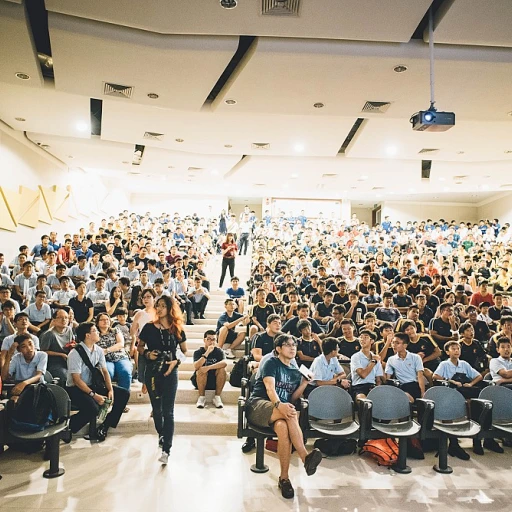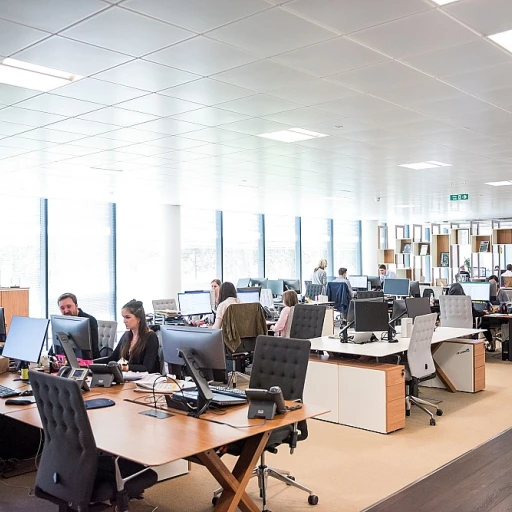
The Role of PIP in Talent Acquisition
The Integration of PIPs within Talent Acquisition
Understanding the significance of a Performance Improvement Plan (PIP) within an organization's talent acquisition strategy is key to fostering a dynamic and engaged workforce. A PIP can be an effective tool in addressing performance issues while opening doors for employee development. In human resources, when nurturing talent over time, the alignment of improvement plans with organizational goals is essential.
A strategic talent acquisition approach incorporates PIPs to not just place the right individuals in the right roles but also to support employees in enhancing their job performance. A PIP process is especially vital when managers and HR need a structured plan to help employees regain optimal performance levels. Continuous check-ins and feedback throughout the PIP will help employees by identifying specific areas for improvement while setting realistic and achievable performance objectives.
Employers leveraging PIPs as part of their performance management infrastructure can ensure that these plans not only address immediate performance concerns but also align with long-term business objectives. This dual benefit supports the organization's overarching talent goals and aids in retaining committed employees who have successfully overcome performance challenges through well-structured improvement plans.
Therefore, embedding a PIP employee framework into talent acquisition strategies becomes an endeavor where performance issues are proactively resolved, helping to maintain a motivated, skill-enhanced workforce prepared to meet future organizational needs.
Identifying the Need for a PIP
Recognizing When a PIP is Necessary
In any robust talent acquisition strategy, identifying performance improvement needs early can prove crucial to employee retention and growth. Recognizing when a Performance Improvement Plan (PIP) is necessary is a nuanced process that requires attentiveness from human resources and management teams. Effective performance management entails observing certain triggers that may indicate the need for an improvement plan. These triggers include:- Recurring performance issues that don't align with job expectations and responsibilities.
- Specific goals not being met consistently, impacting overall employee performance and productivity.
- Negative feedback from team members or managers highlighting persistent challenges in work quality or attitude.
Designing an Effective PIP
Crafting a Tailored Performance Improvement Plan
Designing an effective Performance Improvement Plan (PIP) is a critical step in addressing performance issues and supporting employee growth. A well-structured PIP not only helps employees improve their job performance but also aligns with the broader talent acquisition strategy by retaining valuable talent. Here are some key steps to consider:
- Identify Specific Performance Issues: Clearly define the performance issues that need improvement. This involves gathering data and feedback from various sources to ensure a comprehensive understanding of the employee's challenges.
- Set Clear and Achievable Goals: Establish specific, measurable, achievable, relevant, and time-bound (SMART) goals that the employee can work towards. These goals should be directly related to the identified performance issues.
- Develop a Supportive Plan: Outline the steps and resources that will help the employee improve. This may include additional training, mentorship, or adjustments to their work environment.
- Regular Check-Ins and Feedback: Schedule regular check-ins to discuss progress and provide constructive feedback. This ongoing communication will help employees stay on track and feel supported throughout the process.
- Document the Process: Keep detailed records of the PIP process, including goals, feedback, and progress. This documentation is crucial for both the employee and the employer to track improvements and make informed decisions.
By focusing on these elements, employers can create a PIP that not only addresses current performance issues but also fosters a culture of continuous improvement and support. This approach will help employees feel valued and motivated to enhance their performance, ultimately benefiting the organization as a whole. For more insights on navigating opportunities in talent acquisition, you can explore navigating opportunities in Perdue careers.
Implementing PIPs in a Supportive Manner
Creating a Collaborative Environment During Implementation
Implementing Performance Improvement Plans (PIPs) requires a supportive approach to ensure that employees feel guided rather than penalized. This process involves a few essential steps designed to help employees improve their performance while aligning with the broader goals of the organization. Firstly, clear communication is critical. Managers should have an open conversation with the employee about the performance issues, paying close attention to their concerns and any external factors affecting their job performance. This discussion will help identify specific areas where improvement is needed and clarify the objectives of the PIP. Next, setting achievable and realistic goals is vital. These goals should be specific, measurable, and aligned with the employee’s role and the company’s objectives. The improvement plan must outline these goals clearly, providing the employee with a roadmap to success. A well-set plan will help both the employee and the manager assess progress over time. Regular check-ins are crucial during the implementation phase. These meetings should be used to review progress, provide constructive feedback, and make any necessary adjustments to the plan. Such interactions foster a collaborative environment and demonstrate the employer’s commitment to helping the employee improve performance. Feedback during these sessions will help employees stay motivated and aware of their progress. Support systems should be in place to aid employee improvement. Providing access to resources, training, or mentorship can significantly impact the success of the PIP. The support employee receives can help address underlying issues and ensure they are equipped to meet performance goals. Finally, managers play a crucial role in driving the PIP process. Their responsibility is not only to oversee the progress but also to encourage and support employees throughout the plan's duration. By embracing a supportive mindset, managers will help employees navigate challenges, reinforcing the notion that PIPs are a developmental tool rather than a disciplinary one. By focusing on these steps, organizations can effectively implement PIPs in a way that is both constructive and encouraging, ultimately promoting employee growth and improved job performance.Measuring the Success of PIPs
Evaluating the Effectiveness of Performance Improvement Plans
Evaluating the success of performance improvement plans (PIPs) is a crucial part of the talent acquisition strategy. It involves assessing whether these processes are effectively meeting their intended goals for employee performance enhancement. Here’s how employers can measure the success of PIPs:- Clear Metrics: Establish well-defined metrics at the onset of a PIP. These metrics are utilized to assess whether an employee meets the desired job performance goals outlined in the improvement plan.
- Regular Feedback and Check-ins: Frequent check-ins between managers and employees form an essential part of performance improvement. They help in reviewing the progress of the plan. These sessions provide opportunities for continuous feedback, allowing employees to address performance issues promptly.
- Analysis of Performance Improvements: By conducting analyses on employee performance before and after the PIP process, employers can determine if there has been a significant improvement. If employees show progress and meet set objectives within a given timeframe, the PIP can be considered effective.
- Employee Engagement and Satisfaction: High levels of employee engagement are often a positive outcome of supportive improvement plans. Employers should monitor employee satisfaction levels during and after the PIP to ensure the process is fostering a constructive work environment.
- Review of Support Systems: Evaluate the support systems provided during the PIP. If employees feel adequately supported and improve performance as a result, it is a sign that the PIP process is functioning effectively.












